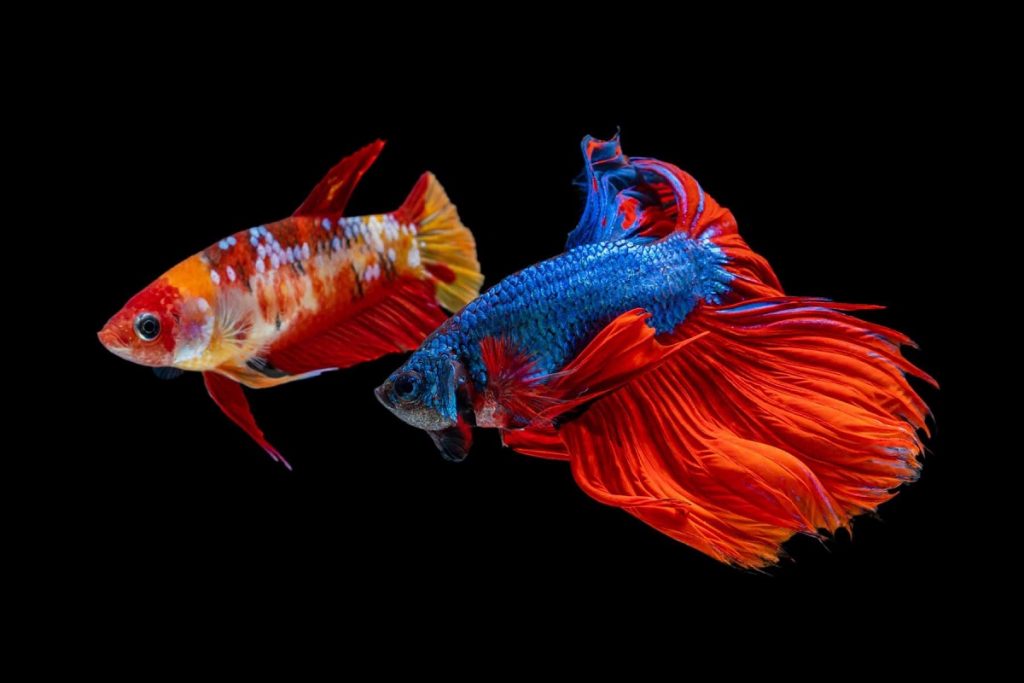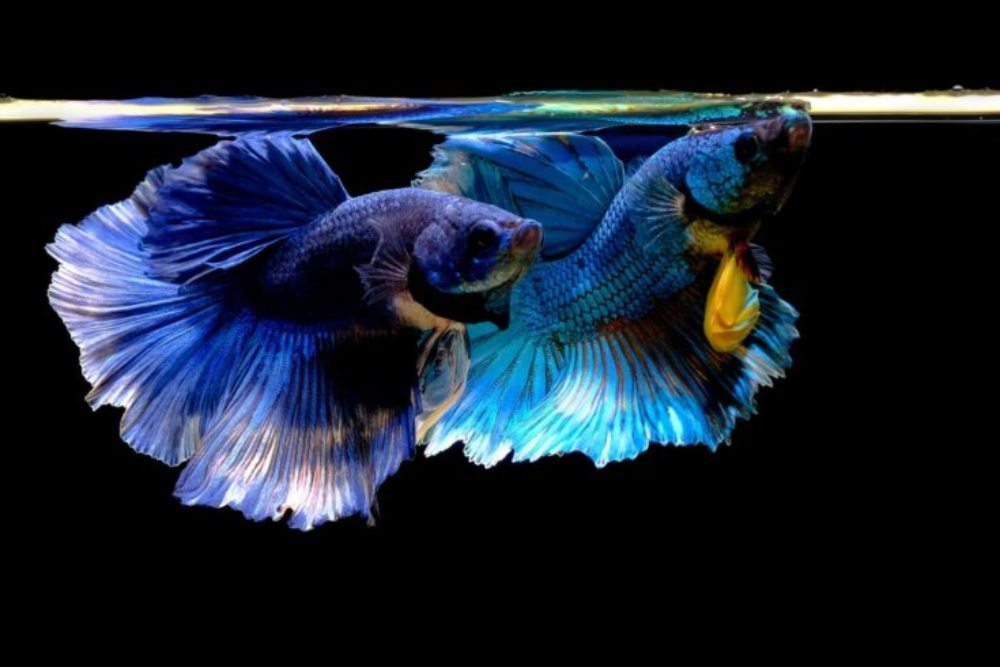Introduction
In the captivating world of aquarium enthusiasts, few fish command attention and admiration quite like the Betta fish, commonly Known for their vibrant colors, flowing fins, and unique personalities, Betta fish are a favorite among hobbyists. While appreciating their beauty in a well-maintained tank is a joy, the process of breeding Betta fish adds an extra layer of fascination to the hobby. This article explores the intricacies of breeding Betta fish, from understanding their behavior to caring for the fry, providing a comprehensive guide for both novice and experienced aquarium enthusiasts.
Understanding Betta Behavior: Males, Females, and Courtship
Betta fish are known for their striking beauty, but understanding their behavior is key to successful breeding. In the wild, Betta fish are solitary creatures, and males are especially territorial. When placed together, two male Bettas may engage in aggressive behavior, resulting in injury or even death. However, the dynamics change when it comes to breeding.
Male Bettas are characterized by their vibrant colors, long fins, and an impressive array of tail types. Females, while also displaying beautiful colors, tend to have shorter fins. The courtship and mating behavior between Betta fish are intricate and fascinating. Before attempting to breed Bettas, it’s crucial to identify healthy and compatible pairs.
Choosing the Right Pair: Mating Compatibility
Selecting the right pair of Betta fish is a crucial first step in the breeding process. While it’s tempting to pair Bettas solely based on their colors, factors like compatibility, health, and age play a significant role. Young, healthy Bettas in their prime breeding age, typically between four and 12 months, are more likely to engage in successful courtship and mating.
Introducing the Male and Female: The Breeding Tank Setup
Once a compatible pair has been identified, it’s time to create the ideal breeding environment. A separate breeding tank is essential to prevent aggression and provide optimal conditions for successful mating. The tank should have a gentle filtration system, maintain a stable temperature between 78-80°F (25-27°C), and be equipped with live or artificial plants to serve as hiding spots and surfaces for the female to rest during the breeding process.
The Breeding Process: From Courtship to Egg Laying
The courtship process of Betta fish is a delicate dance that begins with the male building a bubble nest. This nest serves as a safe space for the eggs and later the fry. The male will flare his fins, display vibrant colors, and perform intricate dances to attract the female’s attention. If the female is receptive, she will respond by displaying horizontal stripes on her body, signaling her readiness to mate.
The male will lead the female to the bubble nest, wrapping his body around hers in a tight embrace. During this process, the female releases her eggs, and the male fertilizes them externally. The male then collects the fertilized eggs in his mouth and carefully places them in the bubble nest. This entire courtship and mating ritual can last several hours.

Egg Hatching and Fry Care: The Initial Days
After the successful fertilization and egg laying, the male will diligently guard the bubble nest and tend to the eggs. Hatching typically occurs within 24-48 hours, and the fry will stay close to the nest as they absorb their yolk sacs. During this period, it’s crucial to ensure a stable environment and provide the fry with appropriate nutrition.
Feeding the fry in the initial days can be challenging as they are too small to consume traditional fish food. Infusoria, freshly hatched brine shrimp, or specially formulated liquid fry food are suitable options. Gradually, as the fry grow, their diet can be transitioned to finely crushed flakes or powdered fry food.
Separating the Fry: Post-Hatching Care
Once the fry are free-swimming and have absorbed their yolk sacs, it’s time to consider their long-term care. The male Betta may exhibit parental care for a few days, but the presence of the fry may become stressful for him over time. At this point, it’s recommended to transfer the fry to a separate tank to avoid potential aggression from the male.
The fry will need meticulous care in their own tank, with regular water changes, suitable filtration, and appropriate food. As they grow, the fry can be gradually moved to larger tanks based on their size and development.
Signs of Successful Breeding: Healthy Fry and Parental Behavior
A successful breeding process is marked by healthy fry that exhibit strong swimming patterns and vibrant colors. The fry’s growth rate depends on factors such as temperature, water quality, and nutrition. Regular monitoring of these parameters is essential to ensure optimal conditions for their development.
Additionally, observing positive parental behavior from the male, such as building bubble nests and actively tending to the fry, is a good sign of successful breeding. If the male continues to display aggression or loses interest in the fry, it may be necessary to remove him to prevent harm to the offspring.
Challenges and Considerations: Patience and Adaptability
Breeding Betta fish can be a rewarding but challenging endeavor. Various factors, including the temperament of the individual Bettas, water conditions, and the breeding environment, can impact the success of the process. It’s essential for breeders to exercise patience, adaptability, and a willingness to learn from each breeding experience.
Potential challenges may include failed courtship, egg eating by the male or female, or health issues with the fry. Each setback presents an opportunity for breeders to refine their approach, adjust conditions, and enhance their understanding of Betta behavior.
Betta Varieties and Colors: A Dazzling Spectrum
Betta fish come in a dazzling array of colors and fin types, making them a favorite among enthusiasts. From the vibrant hues of solid colors to the intricate patterns of marble Bettas, the variety is endless. Understanding the genetics of Betta colors adds an extra layer of intrigue for breeders looking to create specific color combinations or patterns in their fry.
Genetic considerations also play a role in determining the likelihood of certain color outcomes in the offspring. Breeders interested in color genetics often engage in selective breeding to achieve desired traits in successive generations.
Conclusion: A Symphony of Beauty and Responsibility
Breeding Betta fish is a fascinating journey that combines the aesthetic pleasure of vibrant colors and flowing fins with the responsibility of nurturing new life. From the intricate courtship rituals to the delicate care of fry, every stage requires attention to detail, patience, and a genuine love for these captivating fish.
As aquarium enthusiasts embark on the adventure of breeding Bettas, they contribute to the preservation and appreciation of this remarkable species. Beyond the beauty of the fish themselves, the breeding process becomes a symphony of life, color, and interconnected responsibilities that enrich the world of aquatic hobbyists.






















+ There are no comments
Add yours